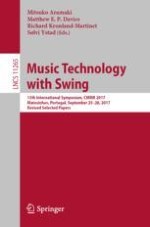2018 | OriginalPaper | Chapter
Music and Musical Sonification for the Rehabilitation of Parkinsonian Dysgraphia: Conceptual Framework
Authors : Lauriane Véron-Delor, Serge Pinto, Alexandre Eusebio, Jean-Luc Velay, Jérémy Danna
Published in: Music Technology with Swing
Publisher: Springer International Publishing
Activate our intelligent search to find suitable subject content or patents.
Select sections of text to find matching patents with Artificial Intelligence. powered by
Select sections of text to find additional relevant content using AI-assisted search. powered by
